If you’ve been following either of my recipes for homemade chicken feed (the original whole-grain feed or the updated corn-free feed), you may have wondered how to calculate the protein content of the recipe should you decide to mix things up.
Perhaps you want to try some other grains and seeds for your flock, or you need to formulate a higher-protein feed for baby chicks, growers, or chickens going through a hard molt.
I personally use a spreadsheet to calculate my figures and manage my costs, and now I’m making this file available to you!
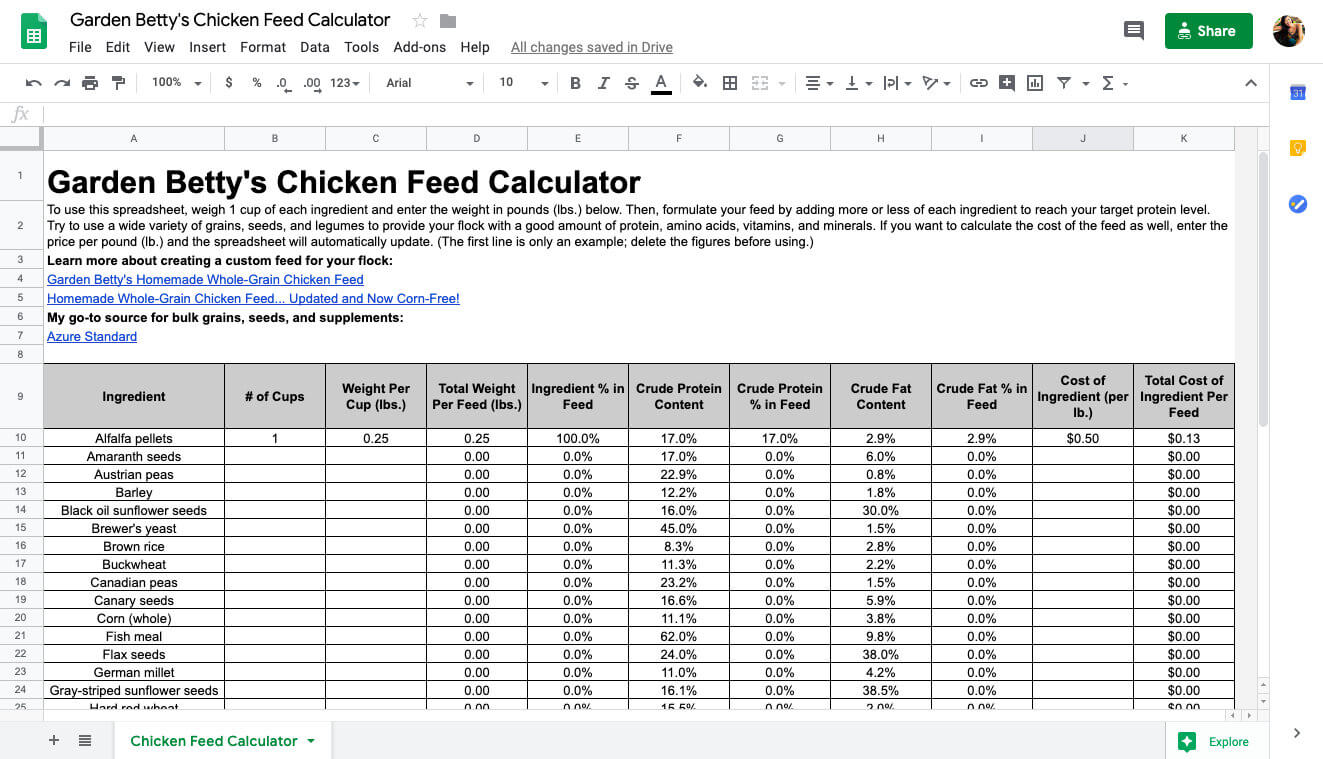
I created this spreadsheet when I first started making my own chicken feed, and still use it from time to time when I reformulate my recipe. (This usually happens in late summer to early fall, when my flock is molting and their nutritional needs change a bit.)
Disclosure: If you shop from my article or make a purchase through one of my links, I may receive commissions on some of the products I recommend.
Garden Betty’s Chicken Feed Calculator works as an Excel (.xlsx) download, so you can save the spreadsheet to your computer, create a custom recipe, and edit the information as needed.
I’ve included a list of common grains, seeds, legumes, and other ingredients that typically make up a poultry feed, along with their crude protein content and crude fat content.
After entering the quantity and weight of each ingredient you use, the total protein will update automatically, allowing you to formulate your feed on the fly.
Weight is the most accurate measure for whole grains, so I recommend investing in a kitchen scale if you haven’t already. This is the one I use.
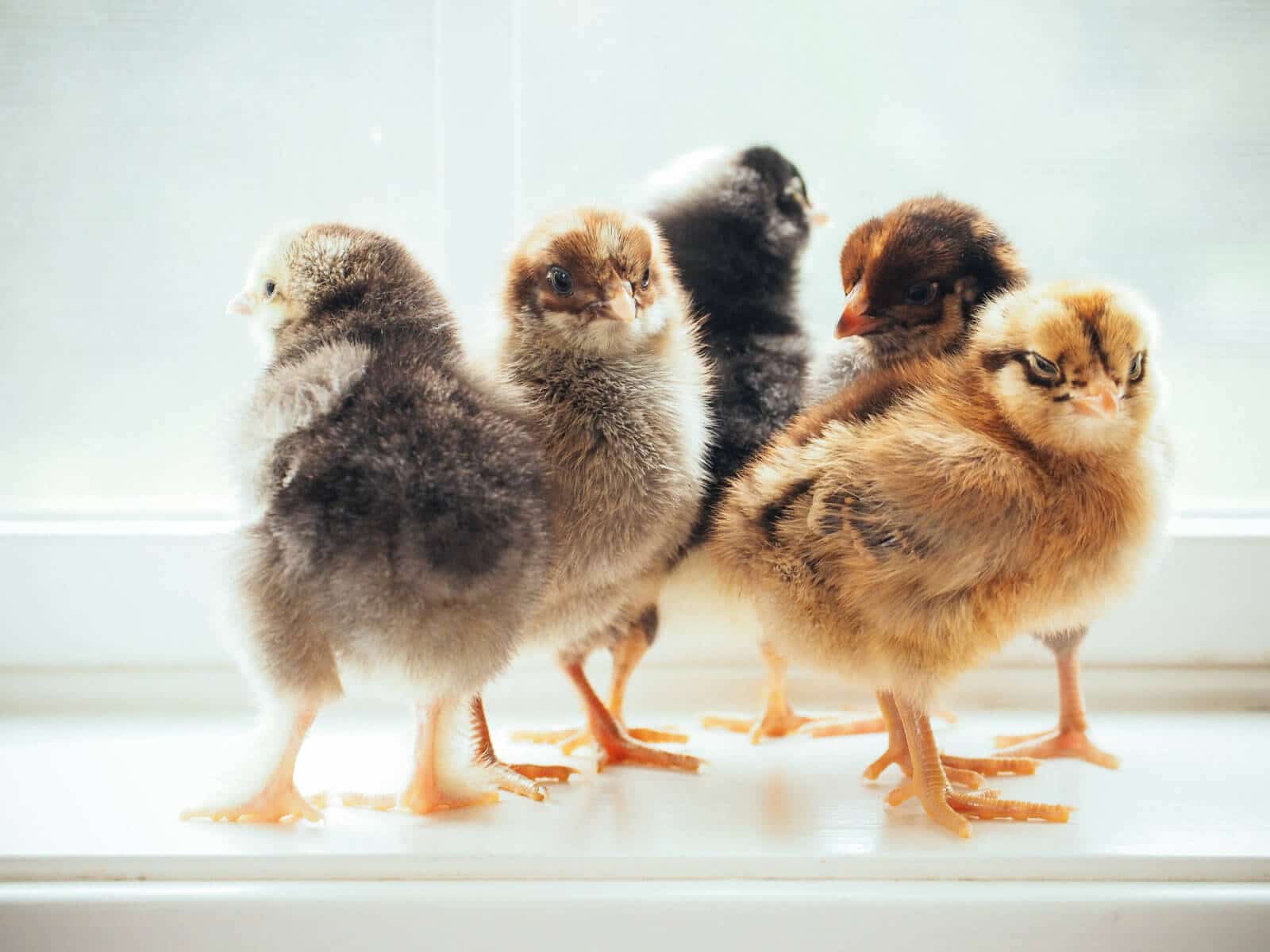
The amount of protein you should aim for depends on the age of your chickens.
| Age Range | Amount of Protein Required |
| Chick starter (1 to 8 weeks) | 20 to 22 percent protein |
| Grower (8 to 18 weeks) | 16 to 17 percent protein |
| Layer (18 weeks plus, or after the first egg) | 16 to 17 percent protein, plus free-choice oyster shells (for calcium) |
While the recommended ranges are ideal for feeding, they don’t take into account other greens, weeds, seeds, bugs, and treats that your chickens may eat throughout the day, especially if they free-range.
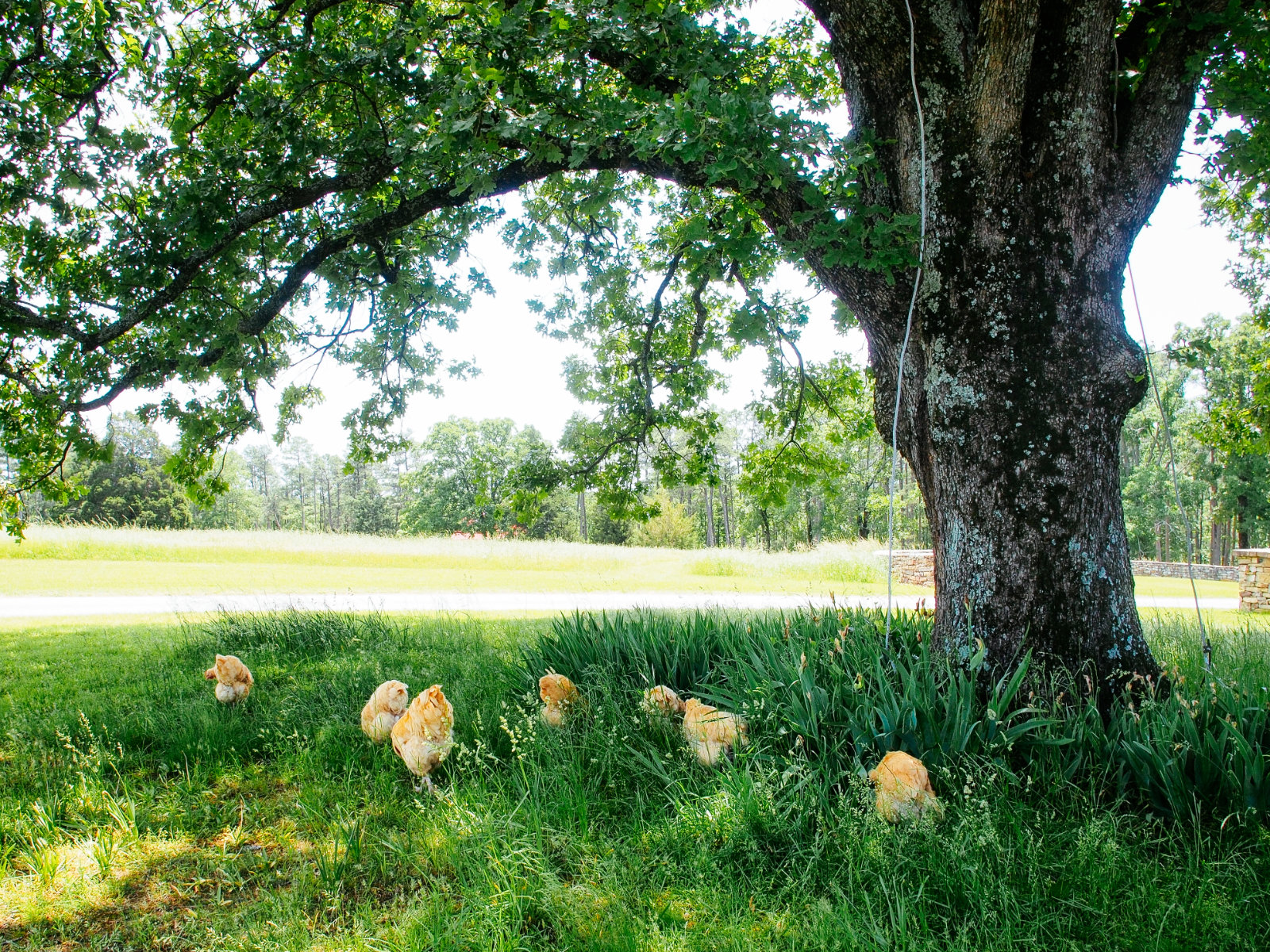
Don’t get too hung up on the number if you’re feeding other things besides grains; a diverse diet is more important than a strict percentage.
I’ve also included a column to calculate the cost of your ingredients. Simply input the price per pound, and the spreadsheet will update with the total cost of your feed. This is especially useful for figuring out if it’s cost-effective to buy certain ingredients.
I buy mine in bulk from Azure Standard, as well as from Amazon (using their free Prime shipping — you can sign up for a 30-day trial here) and my local feed stores.
Keep in mind that the spreadsheet offers a simplistic view of your flock’s nutritional needs. It only determines the protein level of your feed, and doesn’t consider the other crucial components of a diet, such as amino acids, vitamins, and minerals.
Try to use a wide variety of grains, seeds, and legumes (as well as a steady supply of greens and kitchen scraps) to round out your chickens’ feed.
(If you want to learn more, the University of Kentucky Poultry Extension offers excellent information on poultry nutrition.)
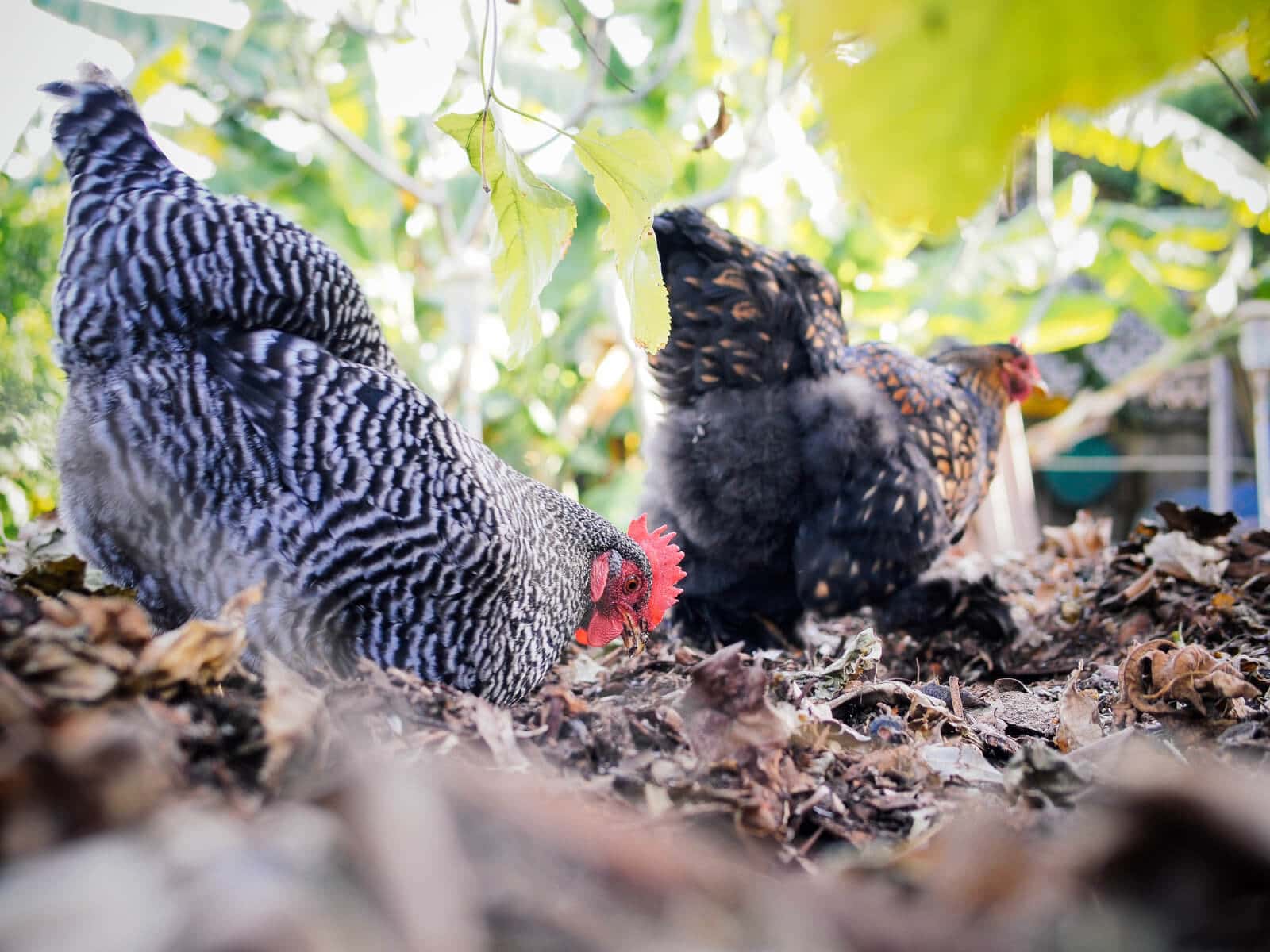
The protein and fat content shown for each ingredient are based on nutrition information sourced from my own ingredient labels, as well as typical values listed on cooperative extension sites.
They are not identical across producers (sometimes differing by several points depending on the varieties and growing conditions).
In order to have the most accurate calculation for your custom feed, use the nutrition information from your own packaging, or ask the feed mill from where you source your ingredients.
If you’re adding new ingredients to the spreadsheet but don’t know their nutritional values, a reliable source to check is Self’s Nutrition Data.
Enter the name of your ingredient in the search box, select the appropriate result, change the serving size to 100 grams, and use the figures shown under “Total Fat” and “Protein.” An ingredient listing 1g of fat and 15g of protein will have 1 percent fat and 15 percent protein, for example.
You can download the chicken feed calculator by entering your email address below. (Your email will not be given or sold to third parties. I hate spam, too.)
Happy mixing!


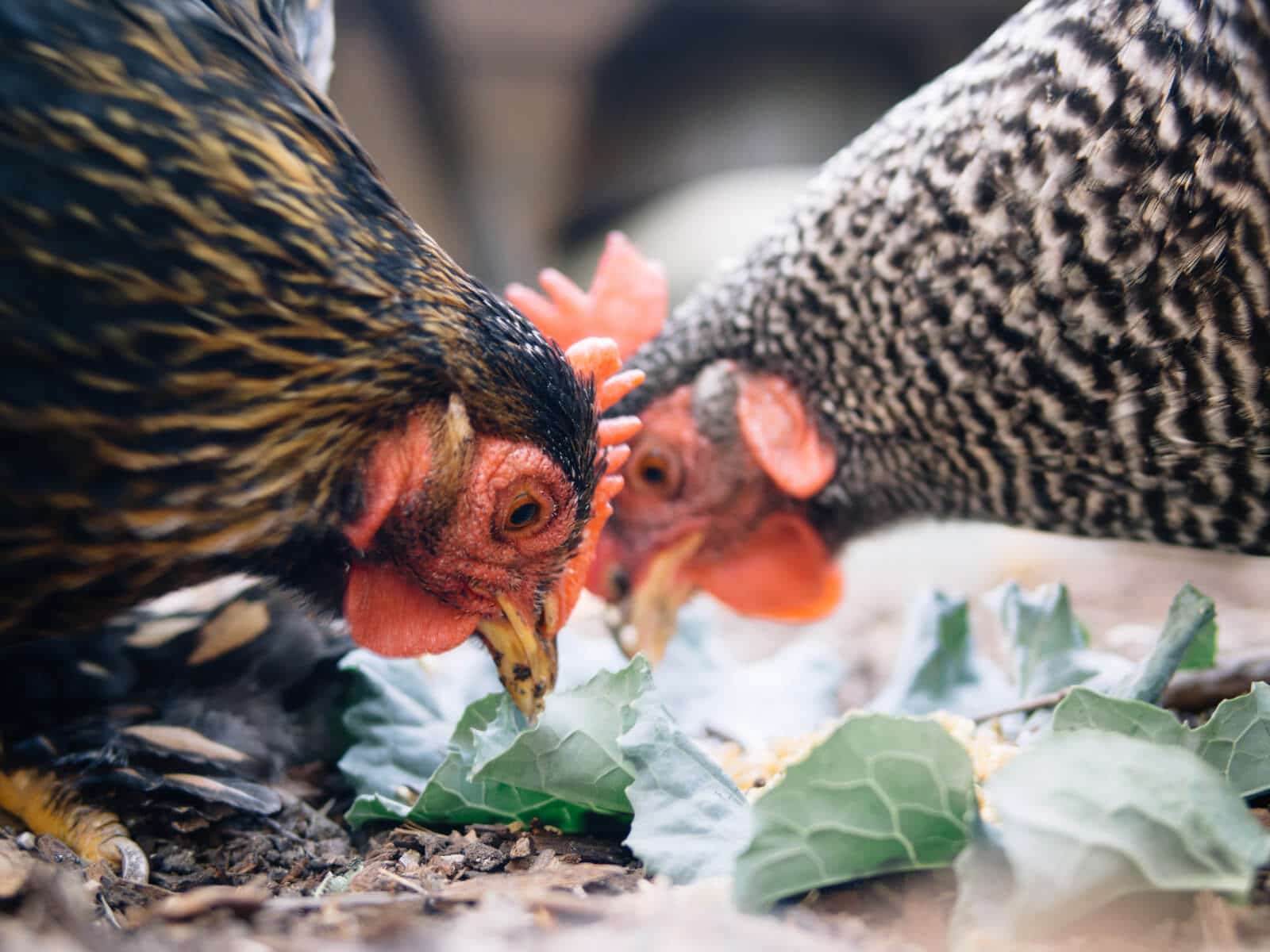













Hi
I have used your spreadsheet for 12 months now & the chickens love the diy mix & have been really healthy. However, they have now all gone into the moult & even though I have upped their protein content, they keep having soft shelled eggs. They have loads of calcium available on tap, both the oyster shell & egg shells but they still have a problem. Have you come across this before using mixed grains rather than straight pellet food? I am loathe to switch to just pellets, especially since my girls hate them & always leave them until last! Any ideas what they are lacking? Their mix consists of pellets,wheat, barley, oats, mealworms, sunflower seeds & hemp & is at 18% protein but I am now topping up with some fish/meat protein to try & boost protein levels, but it not making any difference?
The molting period is a time of intense change in a chicken, so as long as yours appear healthy and are still drinking and eating normally, I wouldn’t worry too much about the soft shelled eggs. Sometimes, their reproductive systems simply can’t keep up with the calcium needs of both their eggs and their feathers. Once they regrow their feathers, their eggs should be back to normal. One tip I do have is scrambled eggs; my ladies love them. I end up buying eggs in their off season and will sometimes scramble an egg for them as a special treat, in addition to their mealworms and sunflower seeds.
Thanks so much for sharing this with us! I would like to formulate a recipe using your spreadsheet, but I don’t have all the ingredients. I’d like to buy them after I formulate it. So the problem I’ve run into is, how do I find the weight of 1 cup of each grain If I don’t already have the grains? Do you have a list of what the grains each weigh? Any help is appreciated!
Also, If I am putting the “weight per cup (Ibs)” of ingredients, say Hard Red Wheat, how would I write that if it is 6.5oz per cup of wheat?
Unfortunately you will need to know the weights of your ingredients before calculating, and I don’t have a list handy. If you don’t want to buy all the grains in bulk just yet, you can buy small amounts from Whole Foods, Sprouts, or WinCo (or whoever has bulk bins in your area) for the purpose of calculating. As for converting ounces to pounds, that’s pretty easy: just type into Google “how many pounds in 6.5 ounces” and it will calculate it for you.
I can not figure out for the life of me how to save the spreadsheet. There are no links, icons or files to be able to save and modify. Please help.
Hi Heather, please follow all the instructions in the email that was sent to you when you requested access. If you did not receive an email, double-check that your address was entered correctly and try again.
WOW thank you for this. We are about to introduce our first batch of chicks to the hens. We will do a chicken tractor inside the electric poultry net as a half way house (they chicks are 4 weeks and we are in texas) cause we need the brooder for some new babies. But at 6 weeks we want to combine the pullets and the hens. Should we feed them all a grower formula (since pullets can’t eat the layer ration)? and then what do we need to offer the hens and the chicks to meet unique needs?
also I am not able to edit the feed calculator
Just wanted to respond to this again, though I think from your last email that you were finally able to edit the spreadsheet. Hope you’re finding it useful!
As for your question on the chicks, pullets, and layers diets: I would keep the chick feed separate, but give the pullets and layers the same feed. The only difference between the pullets and layers is the added calcium, which is served free-choice. So, chances are the layers will know to take those for themselves.
Greg Hadel liked this on Facebook.
Heather Swain liked this on Facebook.
Jamie Huff Smith liked this on Facebook.
Will Taylor liked this on Facebook.
Angie Smith liked this on Facebook.
Dripworks liked this on Facebook.
Tina Berkley-Canales liked this on Facebook.
Really loving your site and sharing it with all my chicken keeping friends. I too am excited about the calculator. It is a weekend, so I know you are probably out working in the garden, so I will probably receive it soon. Hope you are having a great summer!
Hi Robyn, I hope you enjoy using the calculator! It makes formulating so much easier when you can just plug in numbers you know.
Hey Garden Betty, thank you for the information on feeding chickens. I am excited to mix my own feed using this calculator but I entered my email and confirmed about a week ago and am still waiting. Can you send the calculator to me?
Oops! I found it in the promotions section of gmail.
Glad you found it! 🙂
Hi Betty! Happy Mothers Day! Sorry, but I also entered and email, confirmed & have not gotten your calculator. Can you help me please?
I just looked up your email (the one used for this comment), but did not pull anything up under that account. Please email me and let me know if you used a different address to sign up.
Hi Linda (aka Betty). You are great! Thanks for your valuable time. My email is: redkey@verizon.net
I also live in SoCal & can’t find the animal grade brewers yeast without garlic. Can you please let me know where you buy yours? Thanks for all that you do! I so appreciate you!
Hi Linda. I just sent you an email that I used for this comment. Thanks for helping! Can’t wait to try out your calculator. I know it was a lot of work. Thanks for the service!
Thanks, just received your sheet & it looks like you put a lot of work into it. My chickens thank you!!!
I use the AniMed brand, which you can find online or in feed supply stores here.
I entered email and confirmed today and I have not gotten it either! 🙁
Hi Shari, it looks like your email finally arrived as well! Sorry for the delay!
I entered my email and confirmed last night but still haven’t gotten it, I’ve looked all through my spam and different tabs but nothing.
I may be responding to this late, but I just checked the status of your re-send and it looks like you received it!
I entered my email and confirmed it, but haven’t received a link to download the calculator, about how long does it usually take to send? Just wondering:)
Depending on your email provider, it might take up to 10 minutes to arrive in your inbox. I’ll look into this and force send it to you in case it got tangled up in a spam catcher. You should see it shortly!
Garden Betty’s Chicken Feed Calculator For Determining Your Protein Content | Garden Betty http://t.co/9gDtmGSySZ
Garden Betty’s Chicken Feed Calculator For Determining Your Protein Content | Garden Betty http://t.co/qAifSnWmAD
I cant figure out how to download the spreadsheet there arent any links to click on
All instructions are in this post. You will need to enter your email and confirm it before being sent a link to download the spreadsheet. http://mad.ly/signups/125694/join
I tried to make my own excel spreadsheet before finding this. THANK YOU for doing all of the hard work for me!
You’re welcome, I hope you find it useful!
Is it possible to change the protein value? I don’t seem to be able to change it to a different protein amount.
Thanks
Yes, you can change the protein value of any of the ingredients. Simple replace it with your own numbers. The protein value at the bottom of the spreadsheet, however, will change automatically as you devise your recipe. Ensure that you have actually downloaded the spreadsheet to your hard drive before you play around with it, as I do not allow changes to be made online.
Garden Betty’s Chicken Feed Calculator For Determining Your Protein Content | Garden Betty http://t.co/I2iIt62JQf
Garden Betty’s Chicken Feed Calculator For Determining Your Protein Content | Garden Betty http://t.co/Dm1Lt71lyo
Garden Betty’s Chicken Feed Calculator For Determining Your Protein Content | Garden Betty http://t.co/jzydlRgchE
Garden Betty’s Chicken Feed Calculator For Determining Your Protein Content | Garden Betty http://t.co/48La7C26Mr http://t.co/pWXsZsCgLY
Garden Betty’s Chicken Feed Calculator For Determining Your Protein Content | Garden Betty http://t.co/0W1mGV3uhZ
I am working on your spreadsheet for us. The column (D) with this title confuses me: Total Weight Per Feed (lbs.). I am unsure what this is supposed to be.
Never mind, I see that is one of the calculated fields. I got the following through Azure Standard and it seems the protein levels on their nutrition labels don’t match up with yours??
For instance:
Kamut protein = 7g/25 lb bag
Hard red wheat protein = 6g/50lb bag
Rye Berries protein = 5g/50lb bag
Triticale protein = 5g/50lb bag
Flax Seeds protein =2g/25lb bag
BOSS from local feed store protein = 9% 40lb bag
I determine the % by calculating how many grams of protein there are in 100 grams of that particular grain. (For example, 15 grams of protein in 100 grams of grains equals 15% protein.) So check the label for the serving size associated with the protein content shown.
If you formulate your own poultry feed, here’s an easy to way to calculate your protein content on the fly: http://t.co/I0MdTUTlbF #chickens
Thank you so much for this! 🙂
You’re welcome!
Garden Betty’s Chicken Feed Calculator For Determining Your Protein Content http://t.co/VPnkLLBNQE #poultry < TY for RT! @boboroshi
I can’t figure out how to download the .xlsx file….?
never mind….figured it out 😉
After you’ve opened the Google doc, click on File > Download as > Excel.
If you DIY your feed: Garden Betty’s Chicken Feed Calculator For Determining Your Protein Content http://t.co/WCn4fx52OI #backyardchickens
RT @theGardenBetty: My free spreadsheet download: Garden Betty’s Chicken Feed Calculator For Determining Your Protein Content http://t.co/V…
My free spreadsheet download: Garden Betty’s Chicken Feed Calculator For Determining Your Protein Content http://t.co/VPnkLLBNQE #poultry
Calculate nutrition content on the fly! Garden Betty’s Chicken Feed Calculator For Determining Your Protein Content http://t.co/4pHIQtBPuq
A handy tool if you make your own feed: Garden Betty’s Chicken Feed Calculator For Determining Your Protein Content http://t.co/LJ1anYVTOp
Where do you obtain some of the ingredients not readily available in the majority of stores?
I cover some of my sources in the original feed recipe (http://gardenbetty.com/2012/06/garden-bettys-homemade-whole-grain-chicken-feed/) but currently I buy from Azure Standard, WinCo Foods, and Amazon. Occasionally I’ll buy from my local feed/farm supply store. Since I buy in bulk, I only need to order ingredients 2-3 times a year.
Mix your own feed? Garden Betty’s Chicken Feed Calculator For Determining Your Protein Content http://t.co/tNkYfHIgEu #poultry #homesteading
Blogged on Garden Betty: Garden Betty’s Chicken Feed Calculator For Determining Your Protein Content http://t.co/ivoAKjRoel